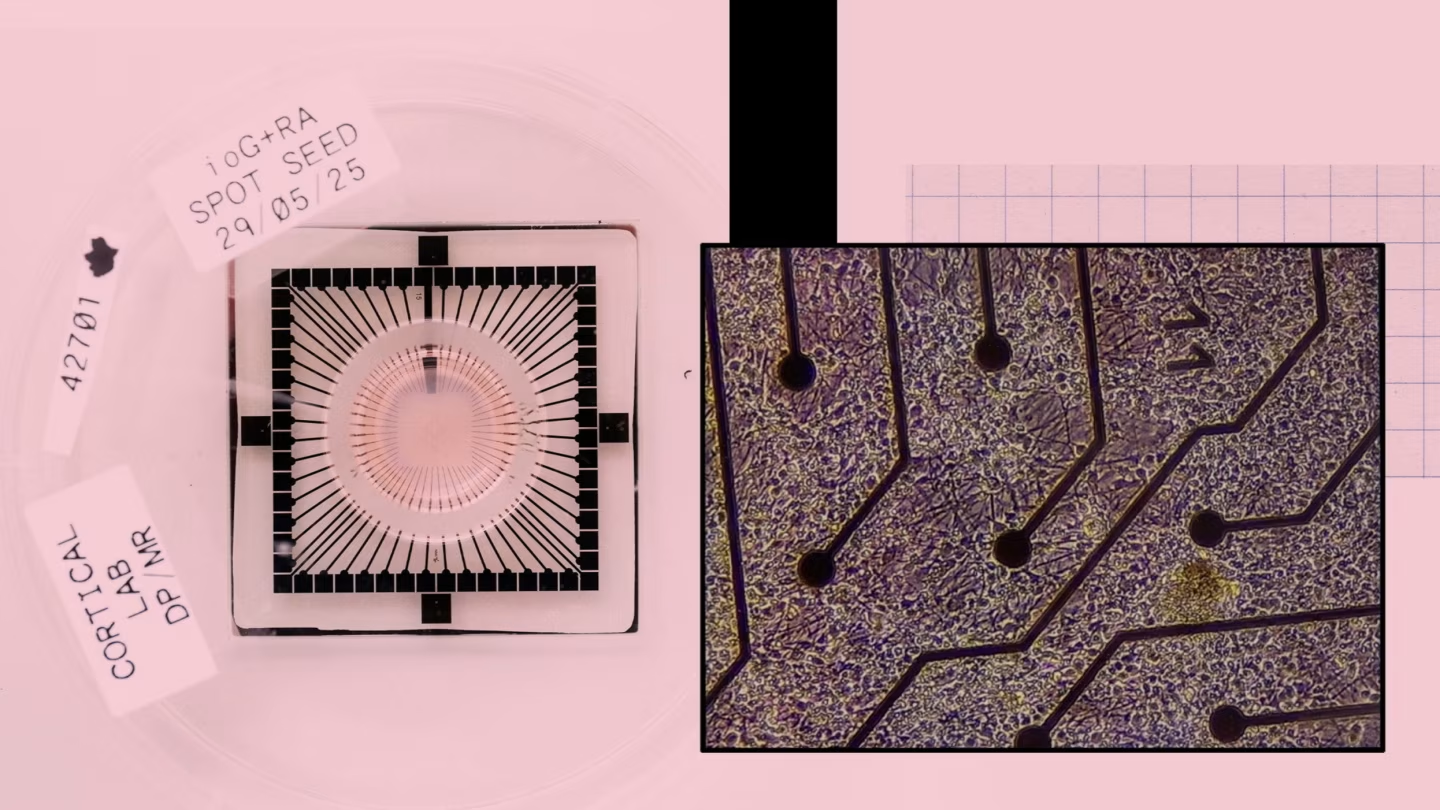Inside the British Lab Growing a Biological Computer

1. The Breakthrough
A pioneering biological computer called CL1 has been unveiled near Cambridge—an unprecedented hybrid system merging 200,000 lab-grown human brain cells with silicon circuitry. Developed by Australian startup Cortical Labs with the UK firm bit.bio, this innovation marks one of the first functional and commercial synthetic biological intelligence machines .
2. How It Works
- Neuron-on-chip architecture: The device integrates carefully layered neurons—excitory and inhibitory—on a silicon array. This enables self-organising electrical activity that mirrors brain-like processing .
- biOS control system: Cortical Labs’ Biological Intelligence Operating System (biOS) sends stimuli to the neurons and interprets their responses in real time, allowing it to perform programmable tasks.
- Fluidic life support: A built-in system supplies nutrients, regulates gas exchange, and maintains temperature—enabling neuron viability for several months.
3. Key Features & Milestones
- Energy-efficient intelligence: CL1 offers massive energy savings, using mere watts compared to the megawatt-hours consumed by conventional AI like GPT‑3.
- Demonstrated learning: Its predecessor, DishBrain, learned to play Pong via reward-punishment cycles; CL1 builds on this by applying neuropharmacological testing (e.g. alcohol, epilepsy drugs) to assess neural responses.
- Research-ready: Positioned as Wetware-as-a-Service, CL1 units are available for remote neuroscience and pharmaceutical research via cloud access platforms.
4. Applications & Implications
- Drug discovery & neuroscience: Researchers can test compounds on live neuronal networks, gaining insights into brain activity and potential treatments for neurological diseases.
- Future computing paradigms: By combining biological adaptability with programmability, CL1 hints at robust cognition systems with lower power use—applicable in robotics, autonomous systems, and security.
- AI beyond silicon: Instead of simulating neural networks, CL1 taps into living tissue—its neurons “rewire themselves” in real time, offering emergent intelligence and situational learning.
5. Challenges Ahead
- Longevity & memory: Neurons in CL1 survive for months, but there’s no memory preservation post expiration—each system must be retrained after neuron death .
- Scalability limitations: While CL1 uses ~200,000 neurons, broader applications may require millions—raising concerns about ethical oversight and biological complexity.
- Ethical considerations: Although not conscious, CL1’s sentient-like responses spark debates about cognitive thresholds and moral frameworks by researchers like Karl Friston and Thomas Hartung .
✅ Final Takeaway
CL1 represents a major leap toward integrating living neural systems into computing platforms—ushering an era where energy-efficient, adaptive, and scalable intelligence diverges from silicon alone. While still in its infancy and facing ethical, technical, and logistical constraints, CL1 opens a blueprint for future computing powered by biology.





